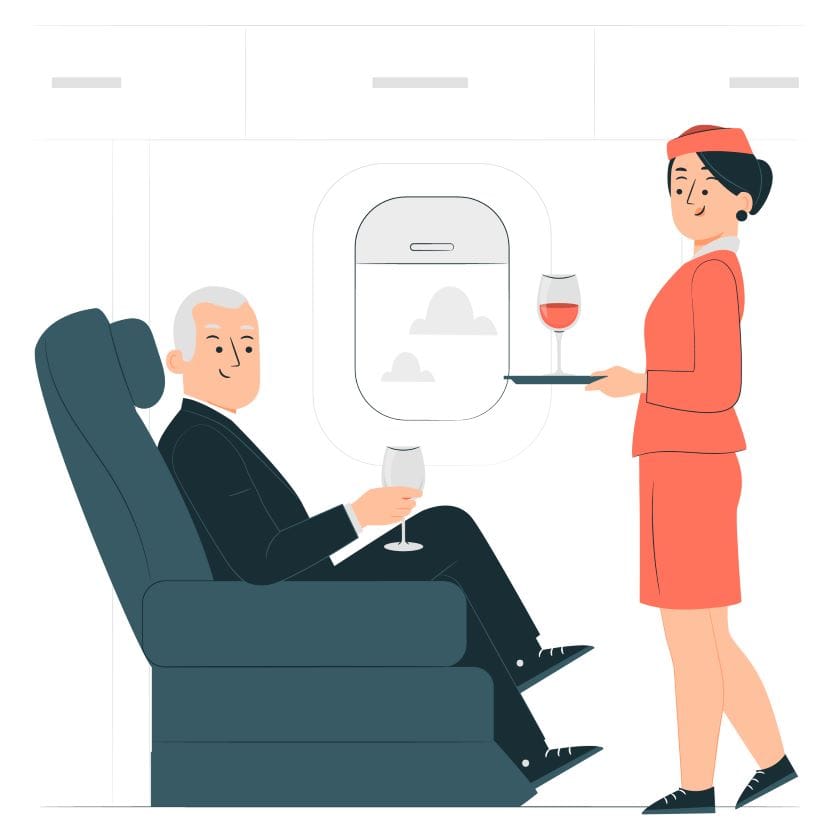As the demand for flexible fleet management grows, more airlines are turning to aircraft leasing solutions.
Leasing aircraft, crew, maintenance, and insurance (ACMI) from private jet charter operators is a cost-effective way for airlines to meet aviation needs, particularly seasonal demand surges.

Types of Aircraft Leases
Aircraft leases come in three variants: wet, damp, and dry.
- Wet Lease
In a wet lease arrangement, the operator provides the aircraft, crew (cockpit and cabin), maintenance, and insurance. Wet leasing is ACMI leasing.
The wet lease option is for airlines that need additional capacity, say, due to short-notice demand surges, and have no available crew or maintenance support capacity to get airplanes off the ground.
- Damp Lease
Damp leasing is similar to wet leasing but with a critical difference: the lease operator provides the aircraft and maintenance but only part of the crew—usually the cockpit crew. The airline, in this case, provides the cabin crew.
Damp leases are less common than wet leases. They allow airlines to fulfill short-term demand surges without relinquishing control over the customer experience.
- Dry Lease
In a dry lease, the airline leases only the aircraft and forgoes all the other add-ons of crew, maintenance, and insurance. It is the best option for airlines that want the most control over their operations, brand, and customer experience.
However, dry leasing calls for more commitment and work. Not only do airlines need to hire and train their own crew,. They must maintain the leased aircraft, which means they must invest in maintenance hangars.
Aircraft Hangar Safety
A sufficient number of aircraft is crucial to maintaining service levels even during peak aviation seasons and in the face of sudden demand surges; so is maintaining rigorous safety standards in aircraft hangars.
The aircraft hangar is filled with dangers that could potentially injure or kill technicians and maintenance crew. Ensuring robust hangar safety protocols will not only protect valuable aviation assets but also prevent costly repair fees and penalties from lease operators. It will also help prevent incidents that can stop airplanes from flying and adversely impact an airline company’s service levels.
Because of the machinery, hazardous materials, and chemicals in the work environment, airlines must train their employees to be extra careful when working in hangars. The following are protocols they must enforce for overall hangar safety.
1. Keep the hangar floor clean.
Air hoses, electrical cords, tools, boxes, and other equipment can litter the hangar floor. These are potential tripping hazards. To prevent people from accidentally tripping over these tools and items, technicians must keep the floor clean and clear of any obstacles or debris.
Store away tools, boxes, work stands, and cords that are not in use. As much as possible, use retractable reels and place them overhead. Cover cords and hoses with carpet or duct tape.
Remove any flammable substances near electrical equipment. This will help reduce the chances of them catching fire inside the hangar should a fire accident take place.
2. Wear safety gear.
Employees working with or near any electrical equipment should be trained on the correct use of these tools and to wear proper safety gear. Doing so reduces the chances of injury or death while working with electricity.
The primary safety gear technicians must use when working with electrical equipment includes grounded safety mats, safety glasses, and gloves.
Ensure your employees use the correct type of gloves for the job. Specialty gloves are more expensive than regular gloves. However, specialty gloves still cost much less than the expense of treatment when an employee is injured at work.
The following are the types of specialty gloves needed:
- Kevlar gloves: Recommended for technicians working with sharp materials.
- Latex or nitrile gloves: These are a must when working with chemicals or cleaners. The skin can absorb chemicals, causing possible long-term health risks.
Your employees need to wear a breathing mask or hood when working with paint or any substance that can release toxic fumes. Long-term exposure to such fumes can cause serious damage to one’s health.
3. Remove foreign objects.
Foreign objects left lying around can damage aircraft and equipment. Foreign object damage (FOD) can also affect personnel working in hangars.
To minimize the risk of FOD, technicians should keep all work areas clean. Develop a tool control program to help your employees keep track of all the tools and small hardware in the hangar. Provide containers where staff can store or place used hardware items, towels, lubricants, and other consumables.
4. Always keep co-workers updated on tasks.
When working with aircraft, your employees need to always let their co-workers and managers know what they are working on. In some hangars, every aircraft has its own project manager or crew chief responsible for the well-being of each member of their crew.
Before performing any tests, the chief or manager should carefully check the interior and exterior of the aircraft to ensure that no worker is in harm’s way. Any maintenance tasks being performed on the plane should be stopped to prevent incidents.
Conducting tests during the evening is recommended. This reduces the number of people working in or around aircraft.
5. Use protective pads.
Keep the aircraft’s wings padded when the plane is on the ground. Put foam padding along the wing edges to prevent the maintenance crew from getting injured when they accidentally bump into them.
Provide aircraft workers with knee pads. Some bays can get cramped, forcing the crew to work in tight spaces or uncomfortable positions. This can place a lot of strain on the back, especially for tall people. By providing knee pads to the aircraft maintenance crew, they can kneel while working instead of bending.
Keep Service Levels Up With Aircraft Leasing and Hangar Safety
Airlines have service-level targets. Fulfilling them is great for the brand, the customer experience and bottom line.
To meet service level targets, airlines can lease aircraft from air charter service providers and prevent incidents that could ground airplanes by enforcing strict hangar safety controls.











